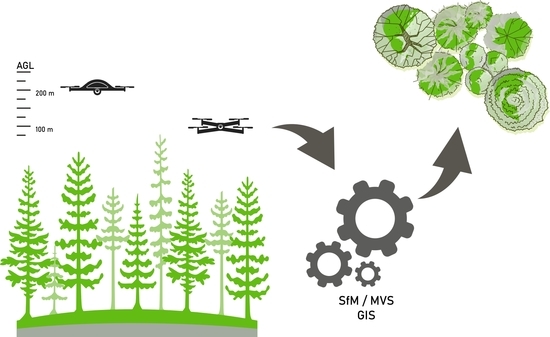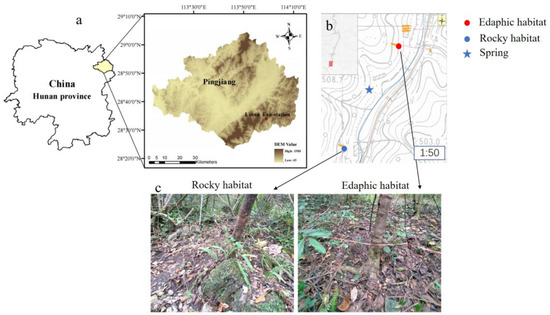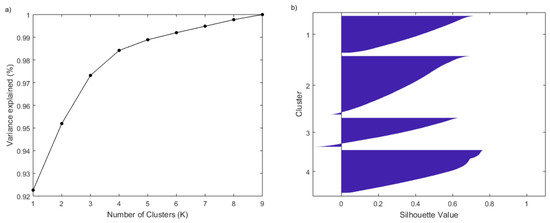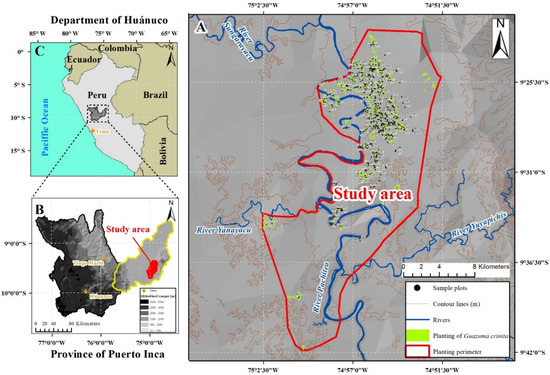Forests 2022, 13(5), 710; https://doi.org/10.3390/f13050710 - 30 Apr 2022
Cited by 13 | Viewed by 3717
Abstract
With the ever-improving advances in computer vision and Earth observation capabilities, Unmanned Aerial Vehicles (UAVs) allow extensive forest inventory and the description of stand structure indirectly. We performed several flights with different UAVs and popular sensors over two sites with coniferous forests of
[...] Read more.
With the ever-improving advances in computer vision and Earth observation capabilities, Unmanned Aerial Vehicles (UAVs) allow extensive forest inventory and the description of stand structure indirectly. We performed several flights with different UAVs and popular sensors over two sites with coniferous forests of various ages and flight levels using the custom settings preset by solution suppliers. The data were processed using image-matching techniques, yielding digital surface models, which were further analyzed using the lidR package in R. Consumer-grade RGB cameras were consistently more successful in the identification of individual trees at all of the flight levels (84–77% for Phantom 4), compared to the success of multispectral cameras, which decreased with higher flight levels and smaller crowns (77–54% for RedEdge-M). Regarding the accuracy of the measured crown diameters, RGB cameras yielded satisfactory results (Mean Absolute Error—MAE of 0.79–0.99 m and 0.88–1.16 m for Phantom 4 and Zenmuse X5S, respectively); multispectral cameras overestimated the height, especially in the full-grown forests (MAE = 1.26–1.77 m). We conclude that widely used low-cost RGB cameras yield very satisfactory results for the description of the structural forest information at a 150 m flight altitude. When (multi)spectral information is needed, we recommend reducing the flight level to 100 m in order to acquire sufficient structural forest information. The study contributes to the current knowledge by directly comparing widely used consumer-grade UAV cameras and providing a clear elementary workflow for inexperienced users, thus helping entry-level users with the initial steps and supporting the usability of such data in practice.
Full article
(This article belongs to the Special Issue Advanced Applications of UAV Remote Sensing in Forest Structure)
►
Show Figures













